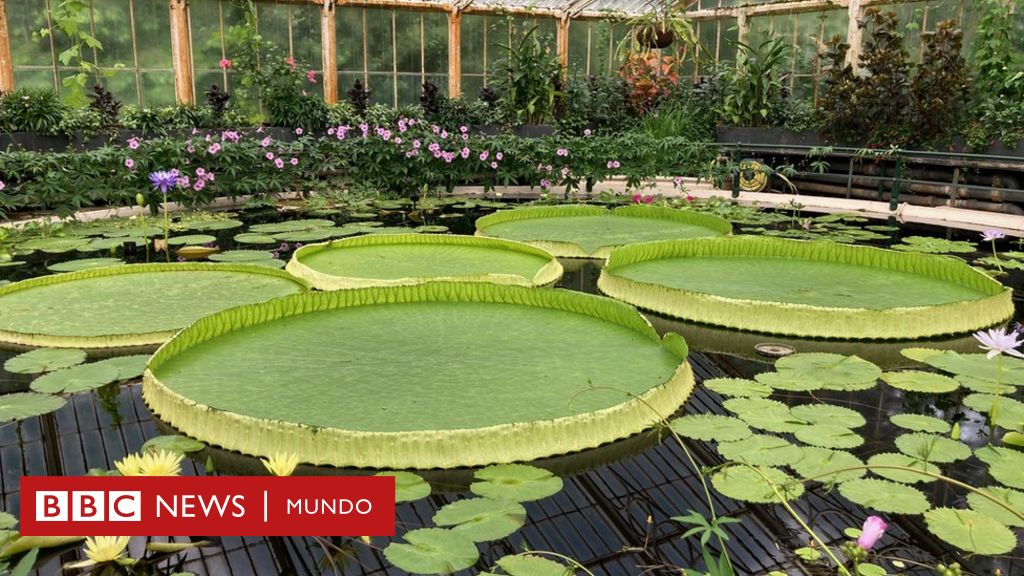Bolivia’s Triumph: Giant Bolivia Water Lily Now Discovered by Scientists That Was ‘Hidden’ for 177 Years

- Rebecca Morell
- Science reporter, BBC News
New types of seeds have been planted
A new scientific study has discovered a new species of giant water lily, baptized Victoria Boliviana, in honor of Bolivia, where it grows, which has been on display for 177 years under the name of another species.
The colossal plant has been recorded in the archives of the Royal Botanic Gardens, Kew, London, and has been growing in many aquatic collections in the gardens, but has been incorrectly identified as another species.
Now, a new scientific study has revealed that it is actually a new species. In addition, this plant, which grows in one watershed in part of the Amazon River system, holds the record for being The largest water lily in the world, with leaves over 3 mEaters Wide.
“totally different”
Botanist Carlos Magdalena, one of the world’s leading experts on water lilies, had long suspected that the plant was different from the other two well-known giant species, amazon victory s Cruz victory.
image source, Getty Images
His skepticism prompted him to ask Bolivian scientists—from the National Herbarium of Bolivia, the Santa Cruz Botanical Garden and La Rinconada Public Botanical Garden—to donate some of the seeds to the Royal Botanic Garden in Kew.
The Spanish botanist explained to the BBC: “This means we were able to grow it with the other two species in exactly the same conditions. Once we did that, we could clearly see that every part of the plant was completely different.” He described the discovery as the “peak” of his career.
image source, Lucy Smith
Together with Carlos, the botanical illustrator Lucy Smith made detailed scientific drawings of the three species, which had to get to the greenhouse at night, because the flowers of water lilies only appear in the dark.
The painter commented, “I was able to get to the flowers, and by looking at the leaves I, as a painter, was able to highlight the differences I saw.”
“And in fact, while I was drawing these differences, I got stronger in my mind and found new ways to tell them apart.”
image source, Lucy Smith
“Maybe it’s personal, but of the three (the new species) I think it has one of the most beautiful,” he added.
The Royal Botanic Gardens in Kew has a long tradition of growing these plants: water lilies house It was built in 1852 to display their collections.
image source, RPG Q
Giant water lilies – discovered in the 19th century – were a natural wonder at the time, and the genus was named after Queen Victoria of England. With the newly discovered species, there are now three such species.
The new discovery shows that water lilies still hold some surprises, and scientists say there is still much to learn about them.
image source, Charles Magdalene
“None of the three species has been well studied,” explained scientist Alex Munro of the Royal Botanic Gardens at Kew.
“We still don’t know how many populations there are and how different they are. We don’t understand the biology of pollination very well. We don’t know much about the dispersal of species – how they get from one place to another.”
“So there are still a lot of unknowns. And I think it’s too big and too obvious, and people haven’t thought to study it in such detail.”
Now you can receive notifications from BBC World. Download and activate the new version of our app so you don’t miss our best content.

“Bacon advocate. Certified creator. Twitteraholic. Tv junkie. Beer fanatic. Internet nerd. Passionate thinker. Reader.”




:quality(85)/cloudfront-us-east-1.images.arcpublishing.com/infobae/OF4NJDPGLBEYJAZ5XZMH3OIPJ4.jpg)



